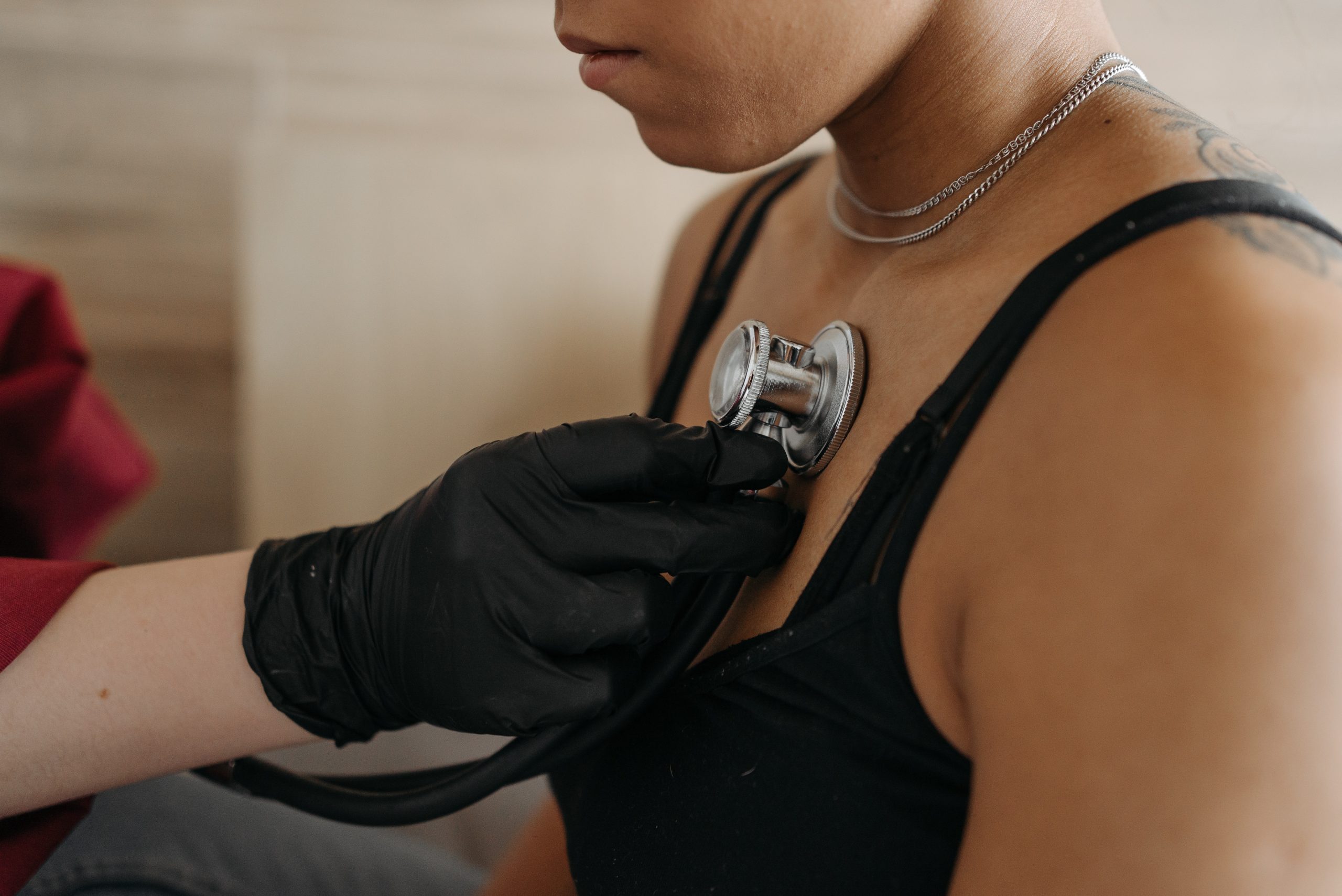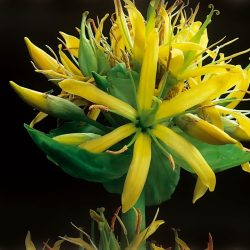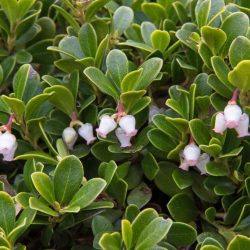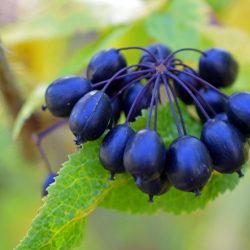In immune pathologies in adults, particularly respiratory infections; the clinical approach in herbal medicine retains all its interest, in particular the use of standardized extracts guaranteeing the contribution of totum , so as to provide as much hyposoluble fractions ( ex: polysaccharides of ginseng for immune stimulation, in particular to strengthen the action of vaccines in the elderly ) than liposoluble ( eg: alkylamides of echinacea in acquired immunity ), in order to restore the full pharmacological potential of plants .
Upper respiratory infections in adults
Viral infections (flu, flu syndrome):
They are marked by the presence of at least one respiratory symptom (cough, expectoration, sore throat, rhinorrhea), and at least one general symptom (stiffness, myalgia, chills, headache or even nausea, vomiting, anorexia, asthenia) .
The proposed herbal medicine treatment is a complex of Echinacea and Cypress extracts .
-
The antiviral activity of Cypress :
Proanthocyanidin oligomers or OPCs are polymers of flavonoids with a dual mode of antiviral action . On the one hand, they have protein binding properties, in particular on enzyme substrates and on cell surface proteins. In fact, OPCs hinder the adhesion of viruses to their host cell, thus limiting virus / host cell recognition and viral replication. On the other hand, they induce virus lysis, which allows the rapid decrease in viral load .
-
The immunostimulating properties (“innate” non-specific immunostimulation and “acquired” specific immunomodulation) of Echinacea :
Echinacea modulates and strengthens the body’s immune defenses against infectious agents. This widely documented action is attributed to the lipophilic ethanolic fraction (in particular the alkylamides) and to the hydrophilic polysaccharide fraction. The phenolic derivatives of caffeic acid (especially cichoric acid) also seem to play an important role in this action.
In particular, echinacea exerts in vivo of the beneficial effects on immune suppression induced by restraint stress by increasing the proliferation of splenocytes and activity of natural killer (NK) cells, while modulating the subsets of T cells and levels of cytokines in the blood.
Lower respiratory infections in adults
Acute bronchitis in adults:
The viral origin of this infectious localization is very largely predominant; the benefit of antibiotics in this indication has not been demonstrated (the same is true for NSAIDs at an anti-inflammatory dose and systemic corticosteroids).
The proposed herbal medicine treatment is a mixture of Echinacea and Plantain extracts .
-
The anti-inflammatory properties of Echinacea:
This property is dependent on the dose, and is exerted locally and generally. It is carried by the polysaccharide fraction, but also by the alkylamides. The mechanisms of this anti-inflammatory activity are in short both vascular (anti-exudative type) and tissue (decrease in lipid peroxidation and increase in protection against oxidative stress) by in vitro inhibition of phosphatidylinositol-3- kinase, cyclooxygenase, 5-lipoxygenase and hyaluronidase.
The anti-inflammatory activity of echinacea could therefore be due to multiple active metabolites, which work together to shift the activation of macrophages from classical activation to alternative activation. This is notably illustrated by the fact that in macrophages treated with lipopolysaccharides (LPS), echinacea inhibits the expression of inducible nitric oxide synthase (iNOS) involved in the inflammatory response in defense and the inflammatory response and defense. from the host. INOS and arginase metabolize a common substrate, l-arginine, but produce distinct biological effects. Indeed, unlike iNOS, arginase actively participates in anti-inflammatory activation.
-
The anti-inflammatory and antispasmodic properties, especially in the respiratory tract of Plantain:
Aucubin and ursolic acid from plantain inhibits cyclooxygenase-2 (COX-2). In addition, Aucubin blocks the nuclear factor kappa B (NF-kB), which slows down the inflammatory cascade. This antioxidant compound exerts its anti-inflammatory activity by also inhibiting tumor necrosis factor alpha (TNF-α).
The mucilages of plantain, with emollient properties, as well as its richness in tannins, explain its mucolytic and antitussive activity, and contribute to its anti-inflammatory action of the upper airways. These polysaccharides have shown an absorption capacity on the mucous membranes, which contributes to the therapeutic effect of plantain in the treatment of irritated mucous membranes, in particular in the mouth.
Aucubin and catalpol, the two main iridoids of plantain, possess in vitro significant antispasmodic activity , similar to papaverine, by inhibiting extracellular and / or intracellular calcium. Experimental research from 1999 confirms the anti-inflammatory, spasmolytic and immunostimulatory actions of plantain in the upper respiratory tract . It is antispasmodic for smooth musculature, in particular for the trachea and bronchi, thus constituting an excellent cough suppressant , but also for the ileum.
Medical bibliographic sources and clinical trials :
- Clément C., Mise en évidence et recherche du mode d’action antiviral d’un proanthocyanidol, Mémoire CNAM, CRA, Clermont-Ferrand, 1993
- Park S. et al., Against Restaint Stress-Induced Immunosuppression in BALB/c Mice, J Med Food, 2018
- Catanzaro M. et al., imminomodulators Inspired by Nature : A Review on Curcumin and Echinacea, Molecules, 2018
- Clifford L.J. et al., Bioactivity of alkamides isolated from Echinacea purpurea (L.) Moench, Phytomedicine, 2002
- Muller-Jakic B. et al., in vitro inhibition of cyclooxygenase by alkamides from Echinacea and Achillea species, Planta Med., 1994
- Raduner S. et al., Alkylamides from Echinacea are a new class of cannabinomimetrics. Cannabinoid type 2 receptor-dependent and – independent immunomodulatory effects, J Biol Chem., 2006
- Fast D.J. et al., Echinacea purpurea root extract inhibits TNF release in response to Pam3Csk4 in a phosphatidylinositol-3-kinase dependentmanner; Cell Immunol., 2015
- Ringbom T. et al., Ursolic acid from Plantago major, a selective inhibitor of cyclooxygenase-2 catalyzed prostaglandin biosynthesis; J Nat Prod., 1998
- Park K.S et al., Anti-inflammatory activity of aucubin by inhibition of tumor necrosis factor-alpha production in RAW 264.7 cells; Planta Med., 2004
- Jeong J.J. et al., Inhibition of TNF-alpha and IL-6 production by Aucubin through blockade of NF-kappaB activation RBL-2H3 mastcells, Cytokine, 2002
- Wegener T. et al., Plantain (Plantago lanceolata L.) : anti-inflammatory action in upper respiratory tract infections, Wien Med Wochenschr., 1999
- Ortiz de Urbina A.V. et al., In vitro antispasmodic activity of peracetylated penstemonoside, aucubin and catapol, Planta Med., 1994
- Bermejo Benito P. et al., Effects of some iridoids from plant origin on arachidonic acid metabolism in cellular systems; Planta Med, 2000
- Schmidgall J. et al., Evidence for bioadhesive effects of polysaccharides and polysaccharide-containing herbs in an ex vivo bioadhesion assay on buccal membranes, Planta Med, 2000







